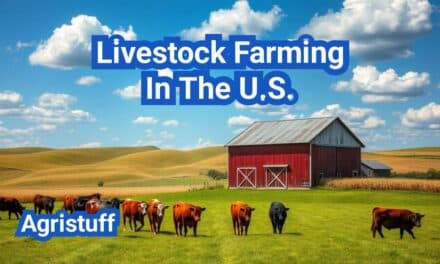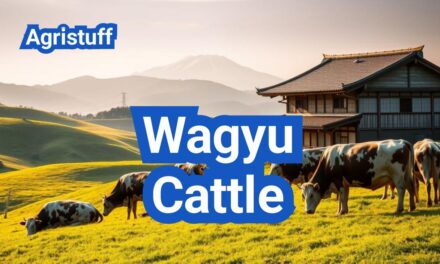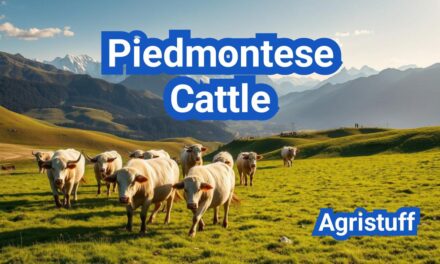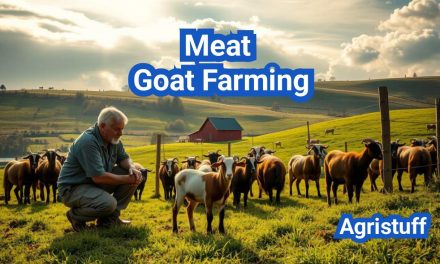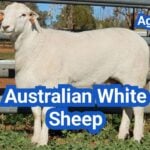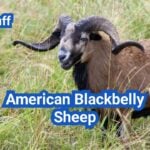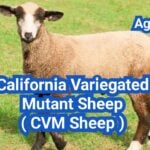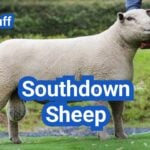The Jacob breed, known for its striking appearance and unique characteristics, has been a prized possession for centuries. This British breed of domestic sheep is recognized by its piebald coloring and the notable polycerate trait, often resulting in four horns.
As an ornamental sheep, the Jacob breed requires specific care to maintain its health and distinctive features. Understanding the breed traits and providing appropriate care is essential for anyone looking to raise these rare and fascinating animals.
Key Takeaways
- Understanding the Jacob breed’s unique characteristics.
- Learning about the specific care requirements for four-horned goats.
- Discovering where to find Jacob sheep.
- Exploring the history and significance of the Jacob breed.
- Identifying the breed traits that make Jacob sheep stand out.
The Fascinating World of 4 Horned Goats
Four-horned goats, known for their striking appearance, have a rich history that spans centuries. These unique animals have captivated the imagination of many, and their distinct characteristics have made them a subject of interest in various cultures.
Historical Background of Multi-Horned Livestock
The history of multi-horned livestock dates back to ancient times. The Jacob sheep, a breed closely associated with 4 Horned Goat, has its origins in 17th-century England. Historical records indicate that multi-horned animals were highly valued for their uniqueness and often kept as ornaments in estate parks.
As noted by historical accounts, “The presence of multiple horns was considered a curiosity, and such animals were often displayed as attractions.” This historical context highlights the significance of multi-horned livestock in human culture and history.
| Period | Historical Significance | Cultural Impact |
|---|---|---|
| 17th Century | Origin of Jacob sheep in England | Multi-horned animals as estate ornaments |
| 18th-19th Century | Breeding programs for unique traits | Increased interest in multi-horned livestock |
The Genetic Marvel of Four Horns
The genetic trait that causes four-horned goats to have multiple horns is a result of a genetic variation. This trait is relatively rare and is considered a genetic marvel. The genetics behind this trait involve a complex interplay of genes that control horn development.
Genetic Variation: The presence of multiple horns is due to a genetic condition that affects horn development. This condition is relatively rare in goats but is a distinguishing feature of certain breeds like the Jacob goat.
Cultural Significance Throughout History
Four-horned goats have held cultural significance throughout history, often symbolizing strength, fertility, or uniqueness. In various cultures, multi-horned animals have been revered or considered symbols of good fortune.
“In many cultures, the presence of multiple horns on an animal is seen as a sign of strength and virility, making four-horned goats highly valued.”
The cultural significance of four-horned goats is a testament to their enduring appeal and the special place they hold in human culture and history.
Understanding the Jacob Breed

Originating in the UK, the Jacob breed is known for its distinctive characteristics, including its multi-horned trait and piebald coloring. This breed has garnered significant attention among animal enthusiasts and farmers due to its unique appearance and historical significance.
Origins and Development of Jacob Sheep and Goats
The Jacob breed has a rich history that dates back several centuries. While the exact origin is unclear, it is believed to have been developed in the UK for its distinctive appearance and hardiness. The breed has been used for both sheep and goats, with the multi-horned trait being a defining characteristic. The development of the breed involved selective breeding to enhance its unique features.
- Selective breeding for the multi-horned trait
- Development for hardiness and adaptability
- Historical significance in the UK
Distinguishing Features Beyond the Horns
Beyond the notable multi-horned trait, the Jacob breed is characterized by its piebald coloring, which includes a mix of white and black or brown spots. The breed’s coat can vary, but the piebald pattern is a hallmark. Additionally, Jacobs are known for their agility and robust health.
Jacob Breed Standards and Recognition
The Jacob breed is recognized by various agricultural and breed associations worldwide. Breed standards typically include the multi-horned trait, piebald coloring, and specific body conformation. These standards help maintain the breed’s integrity and ensure its continuation.
Key breed standards include:
- Multi-horned trait
- Piebald coloring
- Specific body size and conformation
Physical Characteristics of Four-Horned Goats
One of the most distinctive features of four-horned goats is their horn configuration, which sets them apart from other livestock. The Jacob breed, known for its four horns, is a prime example of this unique characteristic.
Horn Structure and Development
The horn structure of four-horned goats is complex and varies among individuals. Typically, these goats have two pairs of horns: two primary horns and two smaller secondary horns, often referred to as “scurs.” The development of these horns begins at a young age, with the primary horns usually being more pronounced.
The genetic factors influencing horn development are significant, and breeders often select for animals with well-defined and symmetrical horns. The horn structure not only contributes to the goat’s aesthetic appeal but also plays a role in its defense mechanisms.
Body Size and Conformation
Four-horned goats generally have a medium size, with both males and females exhibiting a sturdy build. The body conformation is typically characterized by a deep chest and well-sprung ribs, contributing to the overall health and vigor of the animal.
Adult goats usually weigh between 100 and 200 pounds, depending on factors such as genetics, nutrition, and overall health. The breed standard for Jacob goats emphasizes a balanced and proportionate body, which is essential for their overall well-being.
Coat Colors and Patterns
The coat colors and patterns of four-horned goats are highly variable, adding to their visual appeal. The Jacob breed is known for its piebald or multi-colored coat, which can include a range of colors such as black, white, and tan.
“The color pattern of the Jacob goat is one of its most striking features, with a mix of colors that can vary significantly from one individual to another.”
The diversity in coat colors and patterns is a result of selective breeding and genetic variation within the breed. This unique characteristic makes four-horned goats particularly appealing to breeders and enthusiasts alike.
The Anatomy of a 4 Horned Goat Skull

Understanding the anatomy of a four-horned goat skull requires a deep dive into its cranial structure and horn development. The unique characteristics of these goats make them a fascinating subject for study.
Unique Cranial Structure
The skull of a four-horned goat is distinguished by its complex cranial structure, designed to support multiple horns. This structure is a result of genetic factors that influence horn development and placement.
Horn Attachment and Growth Patterns
Horn attachment in four-horned goats is a remarkable process. The horns are attached to the skull via a bony core, which is surrounded by a keratinized covering. The growth pattern of these horns is influenced by genetics, nutrition, and overall health.
Comparing Four-Horned Jacob Skulls to Other Breeds
When comparing the skulls of four-horned Jacob goats to other breeds, several differences become apparent. The table below highlights some key distinctions.
| Characteristic | Four-Horned Jacob | Other Breeds |
|---|---|---|
| Horn Number | Typically 4 | Usually 2 |
| Cranial Structure | Complex, supporting multiple horns | Simpler, designed for 2 horns |
| Horn Size and Shape | Variable, often with different growth patterns | Generally uniform |
The anatomy of a four-horned goat skull is a complex and fascinating subject, offering insights into the genetic and environmental factors that influence horn development.
Regional Varieties of Four-Horned Goats
Regional varieties of four-horned goats showcase the breed’s adaptability and unique characteristics. These goats are found in various parts of the world, each region contributing its own distinct type to the global diversity of this rare breed.
4 Horned Goat in Scotland
Scotland is home to a notable population of four-horned goats, often associated with the Jacob breed. These goats are prized for their hardiness and distinctive appearance. The rugged Scottish landscape provides an ideal environment for these robust animals.
The Uttarakhand Four-Horned Goat
In the Himalayan region of Uttarakhand, India, a unique variety of four-horned goat has been documented. This regional type is well adapted to the high-altitude terrain and harsh climate of the Himalayas, making it a valuable part of the local livestock.
Austrian Vierhornziege Breed
The Austrian Vierhornziege, or four-horned goat, is a recognized breed in Austria. This breed is known for its striking appearance and is often kept for conservation and exhibition purposes. The Vierhornziege is a testament to the breed’s presence in European livestock.
Other Notable Regional Varieties
Other regions also have their own versions of four-horned goats, each with unique traits. A comparative analysis of these regional varieties can provide insights into the breed’s diversity.
| Region | Breed Name | Notable Characteristics |
|---|---|---|
| Scotland | Jacob Four-Horned Goat | Hardiness, distinctive horns |
| Uttarakhand, India | Himalayan Four-Horned Goat | Adaptability to high altitudes |
| Austria | Vierhornziege | Conservation status, striking appearance |
The diversity among regional varieties of four-horned goats highlights the breed’s versatility and the various roles it plays in different cultures and ecosystems.
Caring for Four-Horned Goats

Caring for 4 Horned Goat requires a comprehensive approach that addresses their unique needs and characteristics. These goats, known for their distinctive horns, demand specialized care to thrive in various environments.
Housing Requirements
Four-horned goats need sturdy housing that protects them from predators and harsh weather conditions. The enclosure should be well-ventilated, dry, and free from drafts. A minimum of 10 square feet per goat is recommended to ensure they have enough space to move comfortably.
It’s also essential to consider the horn structure when designing the housing. The enclosure should have low-hanging beams or other obstacles that could cause injury to the goats’ horns. Providing adequate shelter and protection from the elements is crucial for their overall health and well-being.
Nutrition and Feeding Guidelines
4 Horned Goats are ruminants and require a diet rich in fiber. High-quality hay, such as alfalfa or timothy hay, should be the main staple of their diet. They also benefit from a limited amount of grains, such as oats or corn, but it’s essential to avoid overfeeding, as this can lead to health issues.
Access to clean water is vital, and it’s recommended to provide a mineral supplement specifically formulated for goats. The nutritional needs of four-horned goats may vary depending on factors such as age, size, and reproductive status, so it’s crucial to consult with a veterinarian or experienced breeder to determine the best feeding strategy.
Health Considerations Specific to Four-Horned Breeds | 4 Horned Goat
Four-horned goats are generally hardy animals, but they can be prone to certain health issues. One of the primary concerns is the risk of horn-related injuries, which can be painful and potentially serious. Regular monitoring and trimming of the horns can help mitigate this risk.
Additionally, four-horned goats may be more susceptible to certain parasites and diseases due to their unique genetic characteristics. Regular veterinary check-ups, vaccinations, and parasite control measures are essential to maintaining their health and preventing the spread of disease.
Breeding Four-Horned Goats
4 Horned Goat, known for their unique appearance, present a fascinating challenge for breeders who must navigate the intricacies of their horn genetics. Breeding these goats is not just about maintaining their distinctive trait but also ensuring the overall health and well-being of the animals.
Understanding Horn Genetics | 4 Horned Goat
The genetics behind the four-horned trait is complex and involves multiple genes. Research suggests that the trait is linked to a specific genetic variation that influences horn development. Understanding this genetic basis is crucial for breeders aiming to produce offspring with the desired horn characteristics.
Breeding programs must be designed to minimize the risk of genetic disorders while maintaining the four-horned trait. This requires careful selection of breeding stock and a thorough understanding of the genetic lineage of the goats.
Selecting Breeding Stock | 4 Horned Goat
Selecting the right breeding stock is a critical step in breeding four-horned goats. Breeders must look for animals that not only exhibit the four-horned trait but are also healthy and robust. The quality of the breeding stock directly impacts the success of the breeding program.
- Evaluate the horn structure and overall conformation of potential breeding animals.
- Consider the genetic background and lineage to avoid potential genetic issues.
- Assess the health and fertility of the animals to ensure they are suitable for breeding.
Kidding and Early Care | 4 Horned Goat
The care of newborn kids is a critical aspect of breeding four-horned goats. Kids require proper nutrition and healthcare from an early age to ensure they develop into healthy adults. Monitoring the kids’ health and providing appropriate care is essential for their survival and development.
Early care practices, including nutrition and vaccination programs, play a significant role in the overall success of the breeding program. Ensuring that kids receive adequate colostrum and are monitored for any signs of illness is crucial.
Four-Horned Goats in the U.S.

4 Horned Goats have found a unique niche within the U.S. livestock industry, captivating breeders and enthusiasts alike. Their distinctive appearance and versatile uses have made them increasingly popular across the country.
Population Distribution Across States | 4 Horned Goat
The distribution of four-horned goats across the United States is varied, with a notable presence in states with significant agricultural activities. Oregon and Texas are among the top states with reported populations, due to their favorable climates and the presence of dedicated breeders.
Notable American Breeders and Farms | 4 Horned Goat
Several breeders and farms across the U.S. are renowned for their four-horned goat breeding programs. For instance, Green Acres Farm in Tennessee is recognized for its high-quality four-horned goats, while Red Rock Farm in Arizona is known for its innovative breeding techniques. These farms not only contribute to the local economy but also play a crucial role in promoting the breed.
| Farm Name | Location | Specialization |
|---|---|---|
| Green Acres Farm | Tennessee | High-quality four-horned goats |
| Red Rock Farm | Arizona | Innovative breeding techniques |
| Sunny Meadows | Oregon | Conservation breeding programs |
Breed Conservation Efforts in America
Conservation efforts for four-horned goats in the U.S. are gaining momentum, driven by the need to preserve genetic diversity and promote sustainable farming practices. Organizations such as the American Livestock Breeds Conservancy play a vital role in supporting breeders and educating the public about the importance of conserving rare animal breeds.
Practical Uses of Four-Horned Goats
The versatility of four-horned goats makes them an attractive choice for various agricultural purposes. These goats are not only unique in their appearance but also offer several practical benefits to farmers and homesteaders.
Meat Production Capabilities | 4 Horned Goat
Four-horned goats are raised for their meat, which is considered lean and nutritious. The meat production capabilities of these goats are comparable to other breeds, making them a viable option for farms looking to diversify their products. Proper breeding and care can result in high-quality meat that meets consumer demands.
Fiber and Wool Quality | 4 Horned Goat
In addition to meat production, four-horned goats are valued for their fiber and wool. The quality of their wool can vary, but it is often used for crafting and making clothing. The unique characteristics of their fiber can command a premium price in niche markets.
Homesteading and Small Farm Applications
4 Horned Goats are particularly suited for homesteading and small farm applications due to their manageable size and versatile uses. They can be used for land management, such as clearing brush, in addition to providing meat and fiber. Their hardiness and adaptability make them an excellent choice for small-scale farmers.
Overall, four-horned goats offer a range of practical uses that can benefit farmers and homesteaders. Their unique characteristics and versatility make them a valuable addition to any agricultural operation.
Comparing Four-Horned Goats and Polycerate Sheep

When it comes to multi-horned livestock, four-horned goats and polycerate sheep are two breeds that stand out for their unique characteristics. Both have garnered attention for their extraordinary horn structures, but they also have other distinguishing traits that set them apart.
Similarities in Horn Structure | 4 Horned Goat
Four-horned goats and polycerate sheep share a notable similarity in their horn structures. Both breeds can exhibit multiple horns, with four-horned goats typically having four horns and polycerate sheep often having three or four horns. The horn structure in both breeds is a result of genetic traits that have been selectively bred over generations. The complexity of their horn anatomy is not just aesthetically pleasing but also plays a role in their defense mechanisms and social behaviors.
Differences in Care Requirements | 4 Horned Goat
While four-horned goats and polycerate sheep share some similarities, their care requirements differ in several key areas. For instance, four-horned goats are generally more agile and require more robust fencing to prevent escape. In contrast, polycerate sheep are often more docile and may require less stringent fencing. Additionally, the dietary needs of goats and sheep can vary, with goats often requiring more diverse vegetation.
- Four-horned goats need robust fencing due to their agility.
- Polycerate sheep are generally more docile.
- Dietary needs vary between the two breeds.
Choosing Between Sheep and Goats for Your Farm
When deciding between four-horned goats and polycerate sheep for your farm, several factors come into play. Consider the land available, the purpose of the livestock (meat, fiber, or companionship), and your experience with multi-horned breeds. Understanding the specific needs and characteristics of each breed is crucial for making an informed decision that aligns with your farming goals.
Where to Find and Purchase Four-Horned Goats

To bring a four-horned goat to your farm, you need to know the right places to find them. Four-horned goats are a unique and rare breed, making them highly sought after by collectors and farmers alike.
One of the primary ways to find four-horned goats is through reputable breeders who specialize in this breed. These breeders often have a deep understanding of the genetics involved in producing four-horned offspring.
Reputable Breeders and Associations | 4 Horned Goat
Reputable breeders are a crucial resource for anyone looking to purchase a four-horned goat. They not only provide healthy animals but also offer valuable advice on care and breeding. Associations like the Jacob Sheep Breeders Association or the American Livestock Breeds Conservancy can connect you with reputable breeders.
Livestock Auctions and Shows | 4 Horned Goat
Livestock auctions and agricultural shows are excellent venues for finding four-horned goats. These events bring together breeders and farmers, providing an opportunity to inspect the animals in person and network with other professionals in the field.
Online Resources and Communities | 4 Horned Goat
The internet is a valuable tool for finding four-horned goats. Online forums, social media groups, and specialized livestock websites can connect buyers with sellers. Websites dedicated to rare breeds often have listings for four-horned goats.
| Resource | Description | Benefits |
|---|---|---|
| Reputable Breeders | Specialize in four-horned goats, knowledgeable about genetics and care. | Healthy animals, expert advice. |
| Livestock Auctions | Events where breeders and farmers sell livestock. | Opportunity to inspect animals, network. |
| Online Resources | Websites, forums, and social media groups dedicated to livestock. | Wide reach, connects buyers and sellers. |
When purchasing a four-horned goat, it’s essential to research the seller, inspect the animal’s health, and understand the genetics behind the four-horned trait.
The Cultural Impact of Four-Horned Goats

With their distinctive horns, four-horned goats have made a lasting impact on cultural narratives worldwide. Their uniqueness has woven them into the fabric of various societies, symbolizing different values and beliefs.
Symbolism and Meaning in Different Cultures
Four-horned goats are often seen as symbols of prosperity, strength, and uniqueness. In some cultures, the number of horns is believed to signify spiritual or mystical significance. For instance, the four horns can represent the four cardinal directions or the four elements.
The Jacob breed, known for its multi-horned trait, has origins that trace back to ancient times, and its presence in various cultures has been documented throughout history. The symbolism associated with these goats can vary greatly, from good luck charms to representations of fertility.
Four-Horned Goat Tattoos and Art | 4 Horned Goat
The striking appearance of four-horned goats has inspired artists and tattoo enthusiasts alike. Tattoos of four-horned goats are often chosen for their symbolic meanings, such as strength, resilience, and individuality. In art, these goats are depicted in various forms, from realistic portraits to abstract representations, often symbolizing the connection between humans and nature.
Modern Media and Representation | 4 Horned Goat
In modern media, four-horned goats have appeared in documentaries, films, and television shows, often used to represent rare or exotic livestock. Their unique appearance makes them a compelling subject for storytelling, highlighting themes of conservation, uniqueness, and the human-animal connection.
| Cultural Representation | Symbolism | Media Presence |
|---|---|---|
| Ancient Cultures | Spiritual Significance | Documentaries |
| Modern Societies | Strength, Prosperity | Films, TV Shows |
| Artistic Expressions | Individuality, Fertility | Tattoos, Paintings |
The Enduring Appeal of Four-Horned Goats
Four-horned goats have captivated many with their unique characteristics and cultural significance. Their rare occurrence and striking appearance have made them a subject of interest among animal enthusiasts and conservationists.
The enduring appeal of four-horned goats lies in their distinct horn structure, which is a result of genetic variation. This characteristic, along with their robust health and adaptability, makes them a valuable part of livestock heritage.
Conservation efforts are crucial to maintaining the genetic diversity of four-horned goats. As a rare animal species, they require careful management to ensure their continued existence. Breeders and conservationists play a vital role in preserving these animals.
The cultural impact of four-horned goats is also noteworthy, as they have been featured in various forms of art and symbolism. Their unique appearance has inspired many, and they continue to be a fascinating subject for study and appreciation.
In conclusion, the four-horned goat’s unique characteristics, cultural significance, and conservation status make them a truly special breed. Their enduring appeal is a testament to the importance of preserving rare and unique animal species.
FAQ
What is a four-horned goat, and how does it differ from other goat breeds?
A four-horned goat, also known as Jacob sheep or four-horned Jacob, is a unique breed characterized by its four horns. While often referred to as a goat, it is actually a type of sheep. The breed is known for its distinctive appearance and has been kept for centuries as an ornamental sheep.
What are the origins of the four-horned Jacob breed?
The origins of the Jacob breed are not well-documented, but it is believed to have originated in the Middle East or Mediterranean region. The breed has been kept for centuries, and its unique trait of having four horns has been a subject of interest and fascination.
How do four-horned goats develop their horns?
The development of horns in four-horned goats is a complex process influenced by genetics. The breed’s unique horn structure is the result of a genetic trait that causes the growth of multiple horns. The horns begin to grow at a young age, and their development is influenced by factors such as nutrition and health.
What are the care requirements for four-horned goats?
Four-horned goats require specialized care, including adequate housing, nutrition, and health management. They need a secure and spacious enclosure to accommodate their unique needs, and their diet should be balanced to support their overall health.
Can four-horned goats be used for meat production?
Yes, four-horned goats can be used for meat production. While their primary value is often considered to be their unique appearance, they can also provide a source of lean meat. However, their meat production capabilities may vary depending on factors such as breed, nutrition, and management.
How do four-horned goats compare to polycerate sheep?
Four-horned goats and polycerate sheep share similarities in their horn structure, but they are different species with distinct characteristics. Polycerate sheep are known for their multiple horns, but they may not necessarily have four horns like the Jacob breed. The choice between raising four-horned goats or polycerate sheep depends on individual preferences and farm goals.
Where can I find reputable breeders of four-horned goats?
Reputable breeders of four-horned goats can be found through breed associations, livestock auctions, and online communities. It is essential to research and carefully select a breeder who prioritizes the health and well-being of their animals.
What is the cultural significance of four-horned goats?
Four-horned goats have cultural significance in various societies, often symbolizing uniqueness, strength, and resilience. They have been featured in art, tattoos, and modern media, reflecting their enduring appeal and fascination.
Are four-horned goats endangered?
The conservation status of four-horned goats varies depending on the region and breed. While some populations may be considered rare or endangered, conservation efforts are in place to protect and promote the breed.
Can four-horned goats be kept on small farms or homesteads?
Yes, four-horned goats can be kept on small farms or homesteads, provided that their specific needs are met. They can be a valuable addition to a small farm, offering a unique product such as fiber or wool, and serving as a distinctive and interesting animal.
Conclusion of: Four-Horned Goats
Introduction to the 4 horned goat
When most people picture a 4 horned goat, they imagine a dramatic, many-horned animal grazing in a pasture or posing in a farm photo. In reality, many of the animals that get called a 4 horned goat are actually multi-horned sheep, especially the Jacob breed, or very rare four-horned goats known as polycerate animals. These livestock are eye-catching, hardy, and surprisingly practical for small farms and homesteads, and understanding their traits, care, and availability in the USA will help you decide if a 4 horned goat fits your goals and your land. Learn more about polycerate (multi-horned) animals.
Is the 4 horned goat actually a goat or a sheep?
A key starting point for anyone searching for a 4 horned goat is that the classic “four-horned spotted animal” you see online is usually a Jacob sheep, not a goat. Jacob sheep are small, piebald, multi-horned sheep that often have four horns and a slim, goat-like build, which is why many people casually call them a 4 horned goat. For most homesteads in North America, the animal that behaves like a 4 horned goat, grazes your pasture, and provides fiber and meat will typically be a registered Jacob sheep rather than a true goat breed, so it is helpful to understand the difference before you buy. Overview of Jacob sheep and their characteristics.
History and origins of four-horned breeds
The history behind the 4 horned goat look is ancient and tied closely to heritage Jacob sheep. Jacob-type sheep have been documented in Britain for several centuries, kept as “park sheep” on estates because their spotted fleeces and multiple horns were so ornamental. Historical accounts suggest that these four-horned sheep may trace back to stock from the Middle East or Mediterranean areas before spreading across Europe and, later, to North America. Today, the 4 horned goat appearance survives thanks to breeders and conservation groups who maintain Jacob sheep as a rare, historic breed that still has practical value. Jacob Sheep Conservancy – history and conservation work.
Other four-horned goats in the world
Although Jacob sheep dominate most photos labeled as a 4 horned goat, true four-horned goats also exist in a few regions. One example is the Austrian Vierhornziege, literally the “four-horned goat,” where animals naturally carry multiple horns and are managed as hardy mountain livestock. In other mountainous areas, occasional polycerate goats appear, showing the same many-horned trait that people associate with the 4 horned goat image. These goats are extremely rare, often kept mainly in heritage collections or traditional villages, and are not widely available in the USA, so most American smallholders seeking a 4 horned goat will still end up choosing Jacob sheep. Background on four-horned sheep and related breeds.
Key breed traits of Four-Horned Goats (Jacob)
From a homesteader’s point of view, the “Four-Horned Goats (Jacob)” discussed here are Jacob sheep that have the striking 4 horned goat appearance. They are small to medium in size, with ewes often around 80–120 pounds and rams typically larger, and they carry black or lilac spots on a white fleece that handspinners love. Many animals have four well-spaced horns: two rising upward and two sweeping down or outward, giving that unmistakable 4 horned goat silhouette. Their lean carcasses, tough hooves, and efficient grazing make them useful as both heritage showpieces and productive meat and wool animals on diverse farms in the USA. More on traditional British sheep breeds.
Temperament and behavior on the homestead
For a family farm, the 4 horned goat style Jacob sheep is usually more than just a curiosity; it is also a practical, personable animal. Jacobs are generally hardy, alert, and adaptable, often thriving on modest pasture and coping well with both heat and cold when provided basic shelter. With regular, calm handling, a four-horned Jacob that looks like a 4 horned goat can be as friendly and manageable as any other small ruminant, making them suitable for youth projects or agritourism farms. Their active grazing and browsing habits help control brush and maintain pastures, while their unique horns and markings become a talking point for visitors and customers. General behavior profile for domestic sheep.
Horn genetics behind the 4 horned goat look
The distinctive 4 horned goat appearance comes from a genetic trait called polyceraty, meaning “many horns.” Recent research on sheep and goats has shown that polycerate animals share mutations affecting the HOXD1 gene, which helps determine where horns grow on the skull during development. When this gene’s activity changes, the horn bud area can split, creating four separate horns instead of the usual two and giving the classic 4 horned goat pattern. For breeders of Jacob-type four-horned sheep, understanding this science helps them appreciate why some lambs show the ideal horn set while siblings may carry only two horns but still pass on the trait. Scientific background on horn development in animals.
Space, housing, and shelter needs
Whether you keep a Jacob sheep or a rare goat with four horns, a 4 horned goat needs the same basic infrastructure as other small ruminants: secure fencing, dry footing, and protection from wind and rain. Plan for enough pasture to rotate grazing and avoid overgrazing, plus a simple three-sided shelter or barn bay that stays dry and well-ventilated. Because horns are large, doorways and gates should be wide and free of protrusions so that a 4 horned goat cannot get stuck when moving in and out. Thoughtful layout keeps animals calm, reduces stress injuries, and supports overall health and performance on your farm. Basic principles of sheep housing and husbandry.
Fencing and safe handling of horns
Good fencing is critical for a 4 horned goat, especially when horns are long and curved. Woven wire or mesh field fence topped with a hot wire usually works well, while closely spaced high-tensile electric fences can also be effective if animals are trained to respect them. Open-pattern cattle panels or fences with wide rectangular openings are risky, because a 4 horned goat can trap its horns when reaching through for grass. When handling, avoid pulling or twisting horns; instead, guide animals with proper chutes, gates, and low-stress techniques so the horns remain a visual asset rather than a management problem. Guidance on livestock fencing types and design.
Feeding and nutrition for a healthy 4 horned goat flock
Nutritionally, a 4 horned goat kept as Jacob sheep or another polycerate breed thrives on quality pasture, good hay, and a balanced mineral program. On most small farms, these animals can derive a large share of their diet from mixed grasses and legumes, with supplemental hay during winter or drought. Grain or pelleted feeds are usually reserved for late-gestation ewes, lactating mothers, or animals under extra stress. As with any 4 horned goat style flock, avoid sudden diet changes, always provide clean water, and use species-appropriate minerals rather than generic cattle blocks to prevent deficiencies or toxicity. More on feeding and management in sheep farming.
Routine health care and horn maintenance
Routine health care for a 4 horned goat includes parasite control, vaccination according to local veterinary advice, and regular hoof trimming. Horns themselves rarely need trimming if they grow away from the face and neck, but owners should monitor them to ensure a 4 horned goat is not at risk of horns pressing into the skull or eyes. Regular hands-on checks, body-condition scoring, and observation of breathing, gait, and appetite will catch issues early and reduce losses. Working closely with a veterinarian experienced in sheep and goats helps you tailor a health plan that respects the special needs of horned animals. Overview of common health issues in sheep.
Breeding for four horns and selecting stock
If your goal is to consistently produce the 4 horned goat look, you will need to select breeding stock carefully. In Jacob sheep, four horns are common but not guaranteed, and breeders evaluate horn placement, spacing, and structural soundness along with markings, fleece quality, and overall conformation. When you buy a 4 horned goat–type Jacob, ask for registration papers, pedigree information, and photos of parents, and favor breeders who cull for poor horn structure that might cause welfare issues. Responsible selection preserves both the striking appearance and the functional, hardy nature of these animals for future generations. Jacob Sheep Breeders Association information.
Uses: fiber, meat, skulls, and pasture management
Beyond their dramatic profile, a 4 horned goat can be surprisingly multipurpose when managed as a Jacob sheep flock. Jacob sheep provide a medium-grade, naturally spotted fleece prized by handspinners and fiber artists, along with lean, flavorful meat and attractive hides. Some producers market naturally cleaned skulls or horn sets from a 4 horned goat–type animal for décor or educational displays, always following local regulations and ethical standards. On pasture, these sheep help manage brush and weeds, turning marginal land into productive acreage, which makes the four-horned phenotype appealing to both hobby keepers and serious small producers. Background on wool and fiber uses from sheep.
Where to find a 4 horned goat in the USA
If you are searching for a 4 horned goat in the USA, your most reliable route is to look at Jacob sheep breeders and registries. The Jacob Sheep Breeders Association maintains a directory of farms that sell breeding stock, fleeces, and related products, making it easier to locate a 4 horned goat style animal near you. Conservation organizations and heritage breed farms may also offer starter flocks or lambs with strong four-horn genetics. By choosing registered Jacob sheep from responsible breeders, you support both your own farm goals and the long-term conservation of these eye-catching animals. JSBA breeders directory for Jacob sheep.
Questions to ask before buying
Before purchasing your first 4 horned goat, prepare a list of questions about health, registration, and management. Ask about parasite control programs, vaccination history, hoof care, and past lambing performance, and request to see where the animals live, including shelter and fencing. A reputable breeder of 4 horned goat–type Jacob sheep will gladly explain their program, share records, and discuss whether their animals fit your climate and goals. Taking time to ask questions helps you avoid impulse buys based only on dramatic horns or unusual markings and leads to a healthier, more productive flock. Penn State Extension resources on raising sheep and goats.
Are four-horned goats right for your farm?
Deciding whether a 4 horned goat belongs on your farm starts with your objectives and your infrastructure. If you want a heritage animal that combines unique appearance with useful production—wool, meat, land management, and educational value—then Jacob sheep and other four-horned types can be an excellent fit. However, horns add management considerations, fencing must be carefully designed, and stock may be more expensive and harder to find than common commercial breeds. When a 4 horned goat aligns with your marketing story, agritourism plans, or conservation interests, it can become a signature species on your homestead rather than just another ruminant. University of California resources on small-scale sheep enterprises.
Final thought
In the end, the 4 horned goat is more than a viral photo; it represents centuries of selective breeding, rare genetics, and a modern movement to preserve heritage livestock while keeping farms productive. By choosing animals from responsible breeders, investing in solid infrastructure, and learning good small ruminant husbandry, you can enjoy the dramatic horns and historic story while still running a practical operation. For many small farmers and homesteaders, adding a carefully chosen 4 horned goat–type Jacob flock becomes a way to blend beauty, biodiversity, and business on the same piece of land and share that story with customers and visitors. Read more about heritage livestock conservation.
Sources & References
To prepare this overview of the 4 horned goat and Jacob sheep, it is helpful to consult breed organizations, research institutes, and university extensions that publish open, up-to-date information on polycerate sheep and goats and on small-ruminant management.


